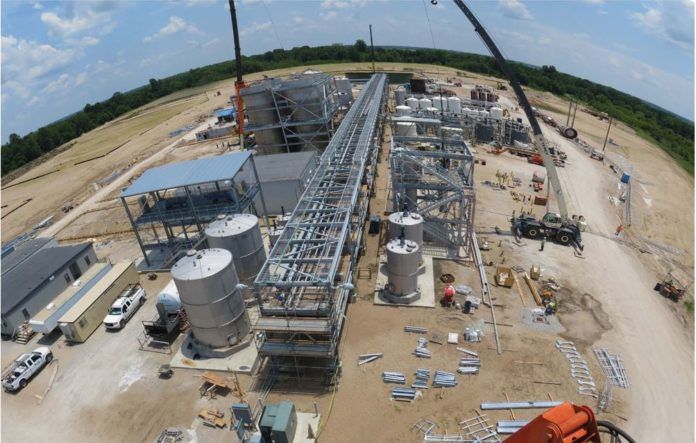Stepan Company last week announced it has closed on the acquisition of a shuttered fermentation plant in Lake Providence.
Financial terms of the transaction were not disclosed.
Myriant Technologies LLC, based in Quincy, Massachusetts and founded in 2009 as BioEnergy International, built the $80 million bio-based succinic acid plant in Lake Providence at the Port of Lake Providence that opened in 2013. The facility sought to focus on using sorghum and carbon dioxide to produce up to 30 million pounds per year or 14,000 tons of succinic acid—which is typically produced from petroleum and can be used in polymers, fibers, detergents and flavors.
The plant was idled in 2016, just three years after opening its doors.
Illinois-based Stepan Company is a major manufacturer of specialty and intermediate chemicals used in a broad range of industries. It is a merchant producer of surfactants, which are the key ingredients in consumer and industrial cleaning and disinfection products and in agricultural and oilfield solutions. The company supplies polyurethane polyols used in the expanding thermal insulation market, and the coatings, adhesives, sealants and elastomers, or CASE, industries.
“Fermentation is a new platform technology for Stepan Company as we look to commercialize next generation surfactants,” Chairman and CEO F. Quinn Stepan Jr. said in the statement. “Bio-surfactants, produced via fermentation, are attractive due to their favorable biodegradability, low toxicity, and in some cases, unique antimicrobial properties.”
In March 2020, Stepan closed on the acquisition of NATSURFACT®, a rhamnolipid-based line of bio-surfactants derived from renewable sources. NATSURFACT’s rhamnolipid technology provides an option as customers across markets seek new sustainability targets for their products, the company said in its statement.
“The acquisition of an industrial scale fermentation plant represents the latest step in our bio-surfactant commercialization efforts,” Stepan said. “With additional investment, we expect to be able to produce 20,000 metric tons per year of bio-surfactants from the site. We look forward to working with our customers to bring these next generation surfactants to the market.”



